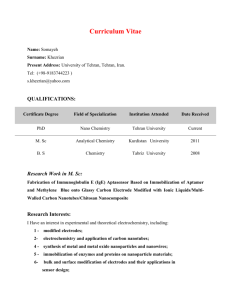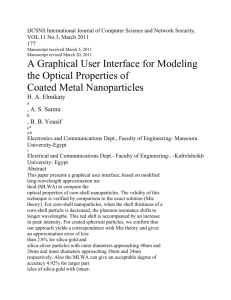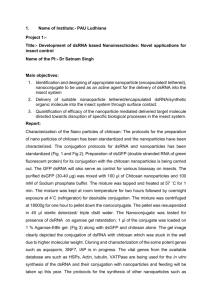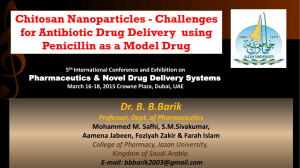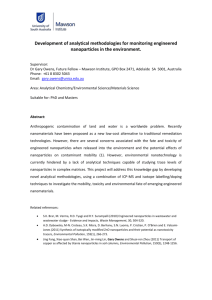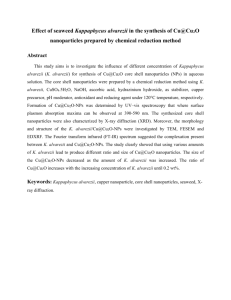Spin polarized transport in semiconductors * Challenges for
advertisement
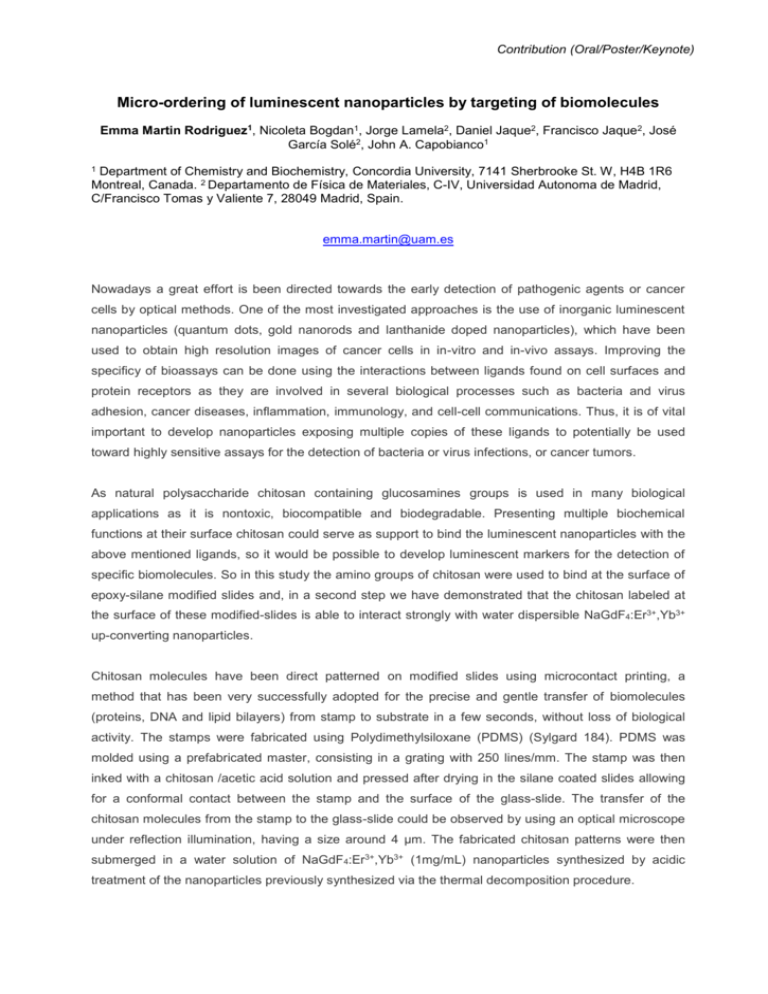
Contribution (Oral/Poster/Keynote) Micro-ordering of luminescent nanoparticles by targeting of biomolecules Emma Martin Rodriguez1, Nicoleta Bogdan1, Jorge Lamela2, Daniel Jaque2, Francisco Jaque2, José García Solé2, John A. Capobianco1 1 Department of Chemistry and Biochemistry, Concordia University, 7141 Sherbrooke St. W, H4B 1R6 Montreal, Canada. 2 Departamento de Física de Materiales, C-IV, Universidad Autonoma de Madrid, C/Francisco Tomas y Valiente 7, 28049 Madrid, Spain. emma.martin@uam.es Nowadays a great effort is been directed towards the early detection of pathogenic agents or cancer cells by optical methods. One of the most investigated approaches is the use of inorganic luminescent nanoparticles (quantum dots, gold nanorods and lanthanide doped nanoparticles), which have been used to obtain high resolution images of cancer cells in in-vitro and in-vivo assays. Improving the specificy of bioassays can be done using the interactions between ligands found on cell surfaces and protein receptors as they are involved in several biological processes such as bacteria and virus adhesion, cancer diseases, inflammation, immunology, and cell-cell communications. Thus, it is of vital important to develop nanoparticles exposing multiple copies of these ligands to potentially be used toward highly sensitive assays for the detection of bacteria or virus infections, or cancer tumors. As natural polysaccharide chitosan containing glucosamines groups is used in many biological applications as it is nontoxic, biocompatible and biodegradable. Presenting multiple biochemical functions at their surface chitosan could serve as support to bind the luminescent nanoparticles with the above mentioned ligands, so it would be possible to develop luminescent markers for the detection of specific biomolecules. So in this study the amino groups of chitosan were used to bind at the surface of epoxy-silane modified slides and, in a second step we have demonstrated that the chitosan labeled at the surface of these modified-slides is able to interact strongly with water dispersible NaGdF4:Er3+,Yb3+ up-converting nanoparticles. Chitosan molecules have been direct patterned on modified slides using microcontact printing, a method that has been very successfully adopted for the precise and gentle transfer of biomolecules (proteins, DNA and lipid bilayers) from stamp to substrate in a few seconds, without loss of biological activity. The stamps were fabricated using Polydimethylsiloxane (PDMS) (Sylgard 184). PDMS was molded using a prefabricated master, consisting in a grating with 250 lines/mm. The stamp was then inked with a chitosan /acetic acid solution and pressed after drying in the silane coated slides allowing for a conformal contact between the stamp and the surface of the glass-slide. The transfer of the chitosan molecules from the stamp to the glass-slide could be observed by using an optical microscope under reflection illumination, having a size around 4 µm. The fabricated chitosan patterns were then submerged in a water solution of NaGdF4:Er3+,Yb3+ (1mg/mL) nanoparticles synthesized by acidic treatment of the nanoparticles previously synthesized via the thermal decomposition procedure. Contribution (Oral/Poster/Keynote) After removing the sample from the solution, it was abundantly washed with distilled water. To ensure the presence of the nanoparticles in the sample after the washing process, the sample was illuminated by a laser diode with 980 nm wavelength. A strong green signal was observed with the naked eye. The emission spectrum of the sample was then characterized, corresponding to the Er3+, Yb3+ emission spectrum. To ensure the binding of the nanoparticles to the patterns, the washing procedure was repeated 10 times. The emitted intensity by the nanoparticles was not observed to decrease significantly after the washing process, ensuring the strong binding chitosan-nanoparticles. The characterization of the samples has been done by two different optical techniques. By NSOM a relevant optical contrast could be observed between the lines with chitosan and the surrounding region, corresponding the higher brightness to the chitosan lines. Then we used a microluminescence microscope to detect the distribution of the nanoparticles in the sample. To do that we focused a 980 nm wavelength laser beam by means of and 100X objective, and mapped the variation of the luminescence intensity of the sample. Although we could detect emission from the Er 3+, Yb3+ doped nanoparticles along the entire sample, the intensity of emission was higher in the chitosan lines, showing that the nanoparticles bind preferably to the chitosan molecules. In conclusion, we have demonstrated that luminescent nanoparticles can bind to chitosan molecules. We have demonstrated this preference by the fabrication of chitosan µ-patterns where the nanoparticles have spontaneously and selectively bind. In addition to the biological applications of the nanoparticles to targeting of specific biomolecules, the work describes a fast and easy technique for the fabrication of luminescent micro arrays, with applications in other fields of science and technology for instance as biosensors, chromatography, diagnostic immunoassays, cell culturing, DNA microarrays, and other analytical procedures. Figures Integrated Intensity (arb. units) Chitosan lines 4 6 8 10 12 Position(m) Optical image of the micropatterned sample (left) and Er3+ luminescence intensity across several chitosan lines (right) showing thepreferent binding of NaYF4: Er3+, Yb3+ nanoparticles to the chitosan lines.


